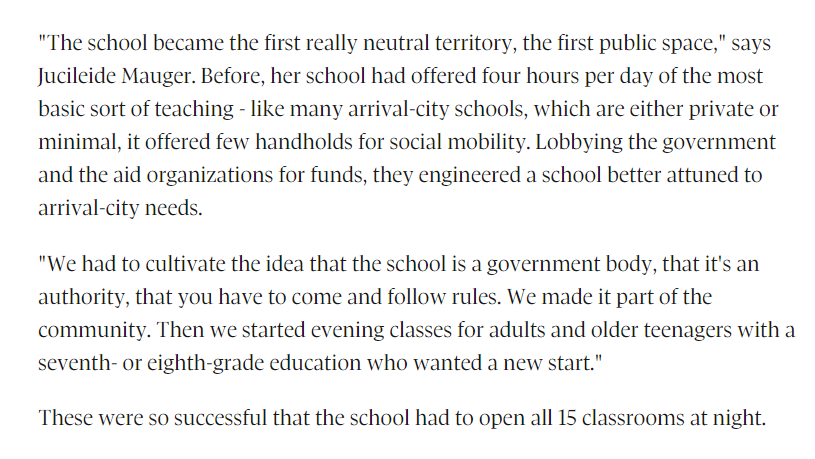The notion that we’re safer keeping schools shut if infection rates aren’t low is based on a middle-class conception of “home.” As I’ve written, a safer crisis policy would have been to keep schools open, perhaps without teaching, to protect families hygenicaly and economically
We tend to have a constructed view of schools as places that impart knowledge. In practice, that’s perhaps their fourth most important function until the last years of secondary. I’ve visited deprived communities that have turned around by making their schools 24-hour hubs
Eg this school in Surrey realized it had a crucial role in rescuing Filipino youth who’d been separated from parents for a decade or more, and stays open til midnight. COVID creates strikingly similar crises for which schools are a solution https://www.theglobeandmail.com/opinion/article-for-this-generation-of-filipino-canadians-broken-policies-have-left-a/
I've also written about this favela in Sao Paulo that ended its status as the most violent place in the world in large part by turning the school, formerly open 4 hours a day (as is typical in Brazil) into an all-day focal point.
https://www.theglobeandmail.com/news/national/mud-floor-to-middle-class/article4327172/
https://www.theglobeandmail.com/news/national/mud-floor-to-middle-class/article4327172/
"Just stay home" is, for a great many people, an order to be in the most infectious and dangerous place, and avoid actual safety. As I noted in this piece, one of those people was George Floyd, for whom both infection and brutality were a consequence https://www.theglobeandmail.com/opinion/article-george-floyd-and-the-dangerously-unequal-effects-of-stay-at-home/
(That second tweet should say "constricted" rather than "constructed")
There is a solid body of scholarship on the health, safety and development/integration benefits of using schools beyond their usual hours and purposes
https://twitter.com/ddziewan/status/1281653524254715904?s=21 https://twitter.com/ddziewan/status/1281653524254715904
https://twitter.com/ddziewan/status/1281653524254715904?s=21 https://twitter.com/ddziewan/status/1281653524254715904

 Read on Twitter
Read on Twitter


